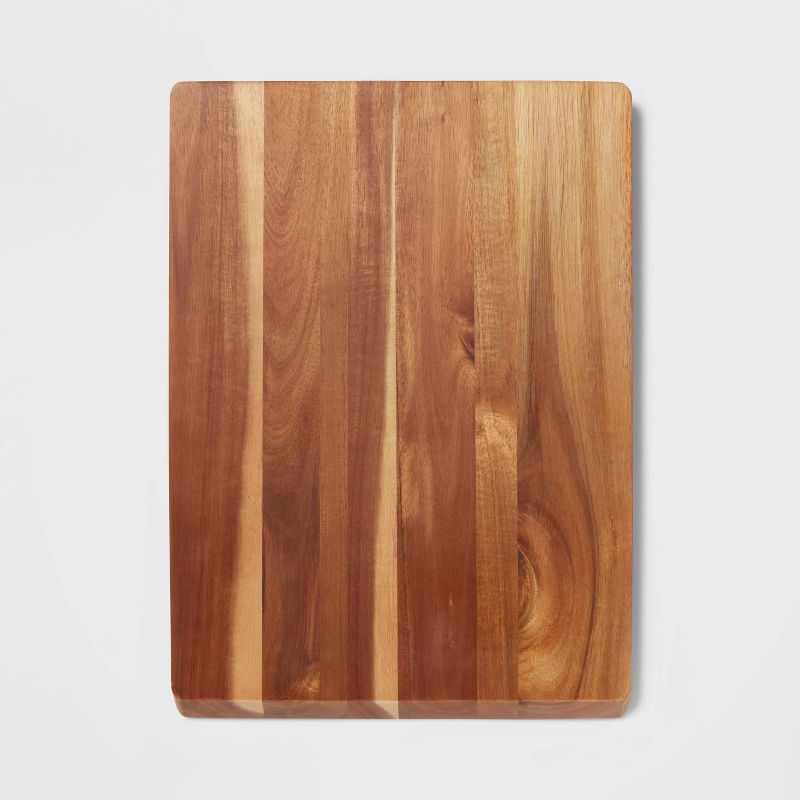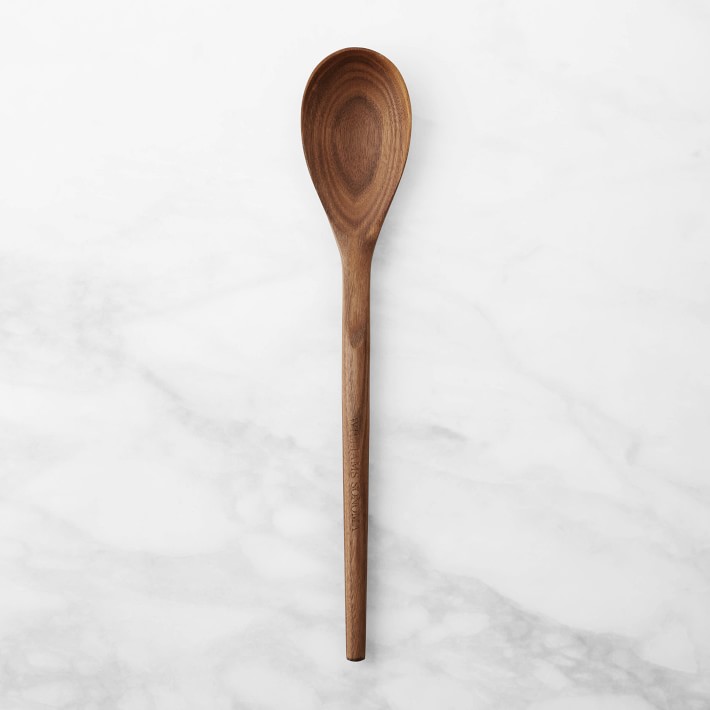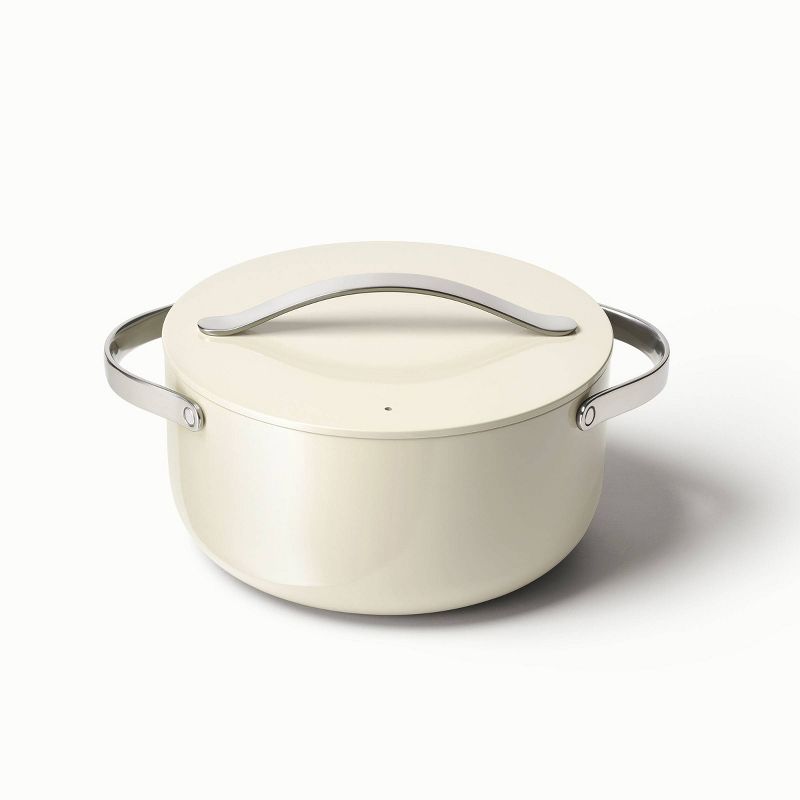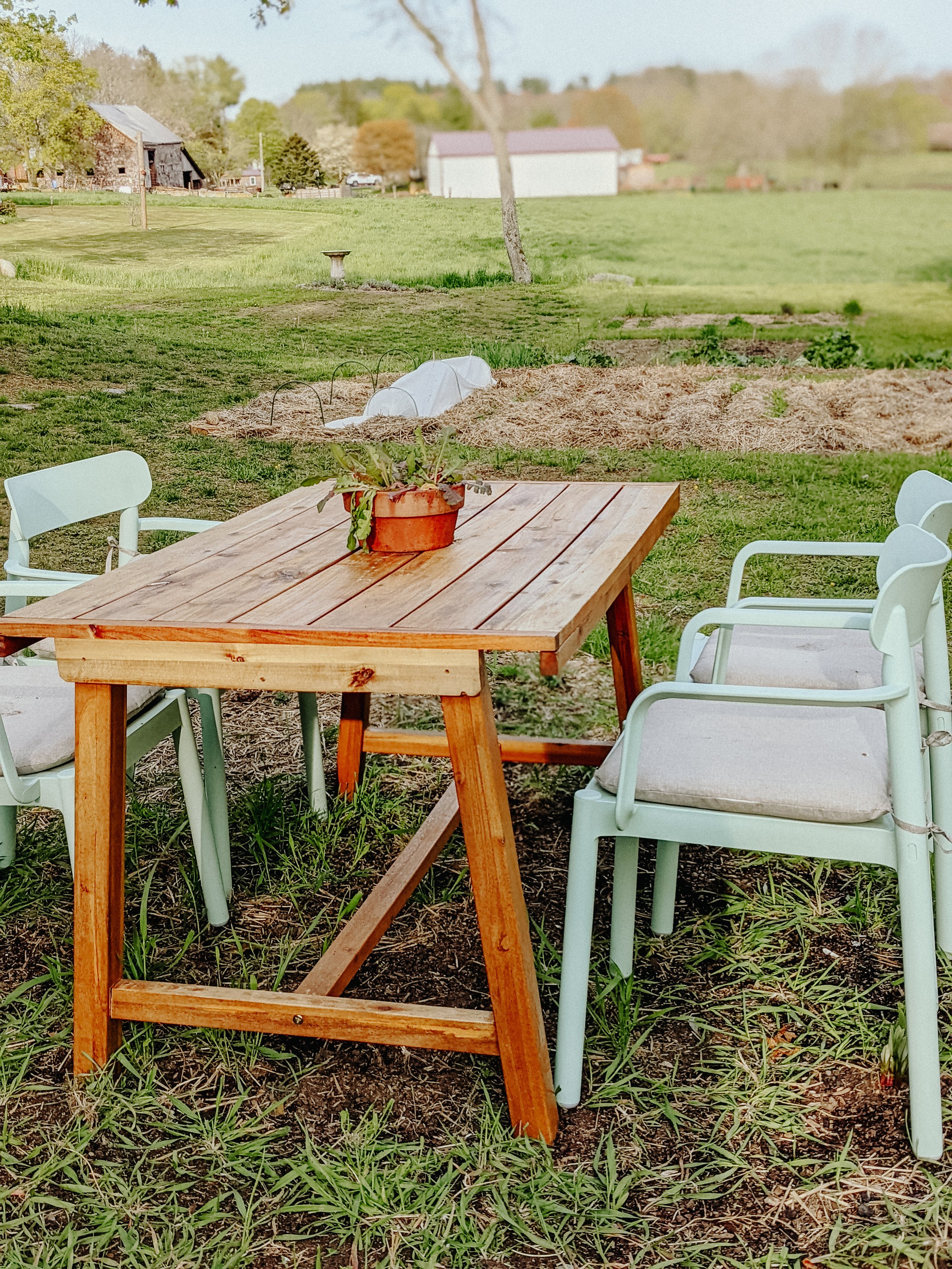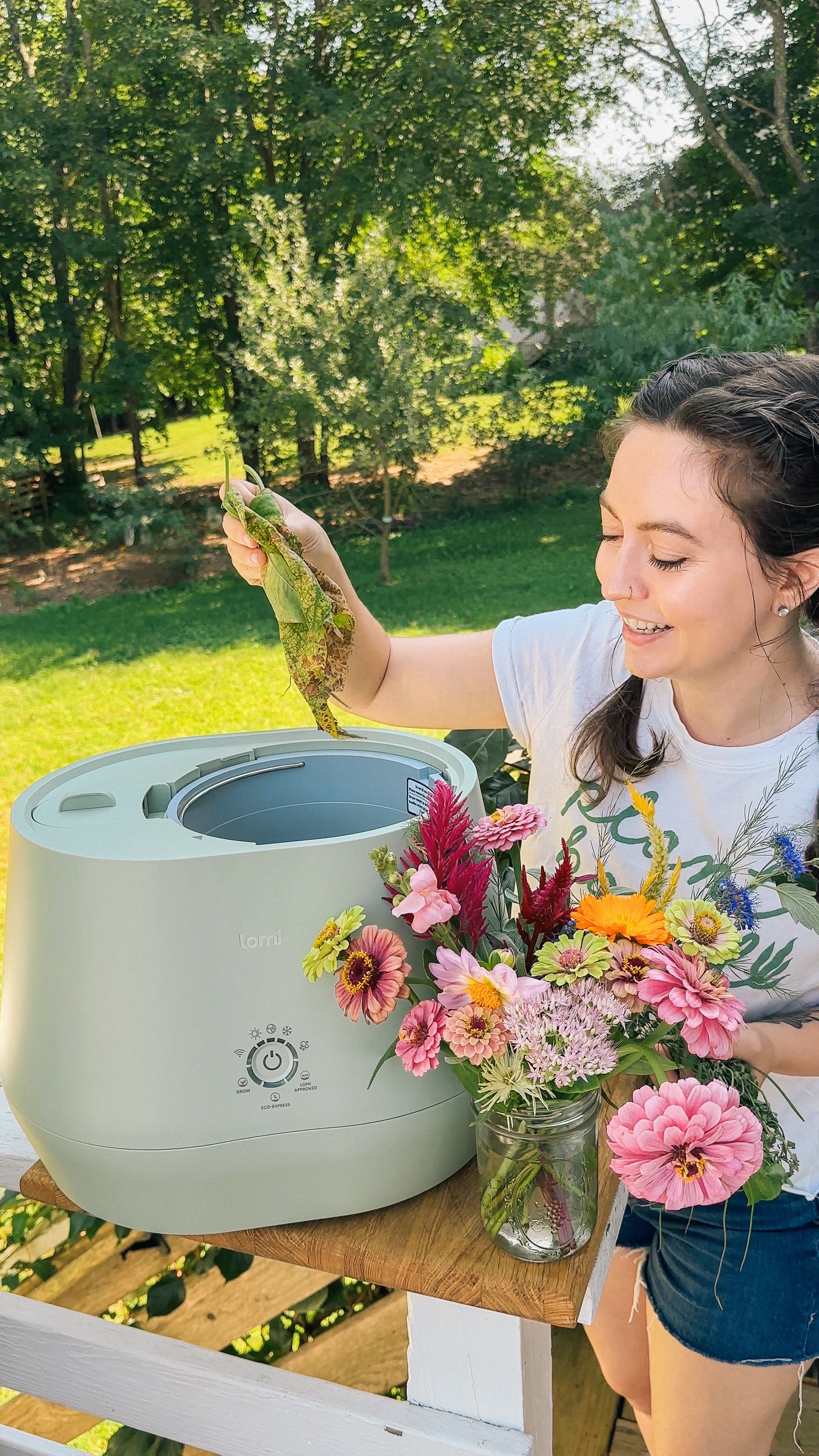BACKYARD GARDENING MADE SIMPLE
Recipe: Mulled Apple Cider
As the days of apple-picking fade away, local farm stands are still stocking their shelves with the rich taste of fall in the form of fresh pressed apple cider waiting to be transformed into a hot mulled cider beverage made for fall days. November is a time to begin intentionally seeking connection with family and friends, and oftentimes that connection comes over the stovetop, making mulled cider together as the warm scent of apples fills your home.
The Cottage Peach is reader-supported. When you purchase through links on our site, we may earn an affiliate commission at no additional cost to you. All opinions are our own. Products in this post were gifted.
Apple picking in our family often ends with us clutching blazing hot to-go cups of apple cider in an attempt to warm our numb fingertips while we sit between the apple trees, burning our tongues on the first sips impatiently taken before our mugs have a chance to cool. The bees are drawn to the sweet smell surrounding us and we listen to their buzzing song as we watch the people around us climb atop each other’s shoulders to reach the best apples at the very top of the tree.
As the days of apple-picking fade away, local farm stands are still stocking their shelves with the rich taste of fall in the form of fresh pressed apple cider waiting to be transformed into a hot mulled cider beverage made for fall days. November is a time to begin intentionally seeking connection with family and friends, and oftentimes that connection comes over the stovetop, making mulled cider together as the warm scent of apples fills your home.
How is apple cider different from apple juice?
According to Southern Living, “Apple cider is fresh, unfiltered, and often unpasteurized. It's also considered a seasonal drink and can be hard to find outside of the autumn months. Apple juice, on the other hand, is filtered and pasteurized, which gives it a longer shelf life, a sweeter taste, and a smoother texture.” so, it’s safe to say that apple cider is NOT the same as apple juice.
To me, there is no comparison between apple cider and apple juice. Apple juice is, at best, the bland counterpart of the richly flavored and fresh apple cider. I almost never keep apple juice in our refrigerator, but if apple cider were available year round I can almost guarantee a jug or two would find its way into my cart each time that I shop.
The taste of apple cider is much fuller and richer than apple juice. Apple cider tastes just like eating a whole apple, with a bit of extra tanginess from the oxidation process.
Why is apple cider brown?
Apple cider is brown because of enzymatic (polyphenol oxidase) reactions that occur in the presence of oxygen. Tiny apple solids floating in the juice turn color when exposed to air, giving cider that gorgeous caramel color and opaque look. Just like an apple begins to brown once it is cut, cider turns brown as the apples are pressed in the apple presser and are exposed to oxygen. This reaction also contributes to the depth of flavor that is present in apple cider.
On a related note, if you are slicing apples for a garnish tray to serve beside your mulled cider and need to keep them from browning before your guests have a chance to dig in all you need to do to keep your apples from turning brown is to soak the cut fruit in a saltwater solution (half a teaspoon of kosher salt per cup of water) for 10 minutes, then drain and store until ready to use. I promise you can’t taste any lingering saltwater flavor at all!
How is apple cider made?
Traditionally, apple cider is made at your local orchard by pressing fresh apples in an apple press, which crushes the apples into a mash or pulp. There are a variety of different styles of apple presses, from small countertop units you can operate by hand to professional grade equipment used by larger operations.
Can you make apple cider at home?
Yes! Many people use their countertop juicing appliance to make fresh apple cider at home. Since the resulting product is unfiltered and unpasteurized, it is considered cider even though you are using a juicer to make it. If you don’t have a juicer, you can throw your chopped apples in a blender and then strain out the pulp using cheesecloth. To make hot apple cider just transfer the strained cider to a sauce pan and heat on medium low until warm.
Why should you buy local cider?
The reasons to purchase your apple cider from a local farm are endless. Your local farm will almost certainly carry apple cider in the fall, whether they have an orchard and press of their own or partner with another local farm that may be further afield. Farms rely on seasonal income from fall activities like hayrides and corn mazes to keep themselves afloat during the winter months when their income is severely reduced or eliminated completely, so supporting your local farm all the way up until their closing date by purchasing any items for your fall activities from them can be a great help. When we buy local produce and groceries, we can be certain that the products on the shelves are as fresh as can be and generally of a much higher quality than is available in the supermarket.
Mulled cider spices
My favorite thing to do with my local apple cider is to make a big pot of hot mulled cider on the stovetop. This not only results in a delicious drink to gather around and share with all of your friends and family, but fills the space with a warm and cozy aroma.
When I’m feeling too achy and fatigued to participate in more involved fall traditions and cooking, mulling cider is a mostly hands-off way I can celebrate the autumn season without draining myself of my limited energy. Since I’m always looking for ways to enjoy seasonal living while being mindful of my own limitations living with chronic illness, mulled apple cider is the perfect way to respect my capabilities.
Hot mulled apple cider is special, because we only get to enjoy it for a small window of time each season. Let this be a drink that opens the door to celebrating seasonal living this fall in your home. This scent experience can be enhanced by incorporating different combinations of spices and fruits into your spiced cider recipe. This is a case where more is definitely more, so don’t feel the need to hold back in creating your flavor combinations.
Some spices and fruits to consider using in your hot mulled cider beverage:
Whole cloves
Cinnamon sticks
Allspice berries
Fresh ginger
Star anise
Allspice
Nutmeg
Cardamom pods
Coriander
Oranges
Lemon
Cranberries
Apples
So why should you make mulled cider on the stovetop rather than the slow cooker? While I encourage you to utilize whatever cooking methods you need to in order to support your own body’s limitations, I consider the stovetop version to be an easy way to practice some mindfulness in my day. Simmering your hot apple cider on the stovetop forces you to pause and be present. Sometimes, coming off of autopilot is the best way to fully appreciate the brief beauty of fall in all its glory before it is time to move on to our long winter. So, pull up a chair if you need to, chop your fruits at the table while sitting down and truly allow yourself to savor the experience - from the fresh scent of citrus as your knife cuts into the rind, to the crunch of apples slicing.
Of course, when you’re finished making my best mulled cider recipe, the mug you choose to enjoy it in can be equally as important in determining how cozy of an experience you create. I like to put out an array of handmade ceramic mugs for my guests to choose from, alongside a tray with additional fruits they can add as a garnish to their drink. Make this mulled cider as the perfect refreshment for your Thanksgiving gatherings!
What does “mulled” mean?
To mull cider means to heat, sweeten, and flavor with spices for drinking. You can also mull ale, and wine. Changing the temperature of your beverage and adding spices increases the depth and complexity of flavor, as well as adding a warming element to bring coziness to your gathering.
How long does mulled cider keep?
You can cool and refrigerate your mulled cider for up to 3 days to be reheated another time. You should not keep it in a sealed bottle - since apple cider is usually not pasteurized it may ferment and cause the bottle to explode.
How to make mulled cider
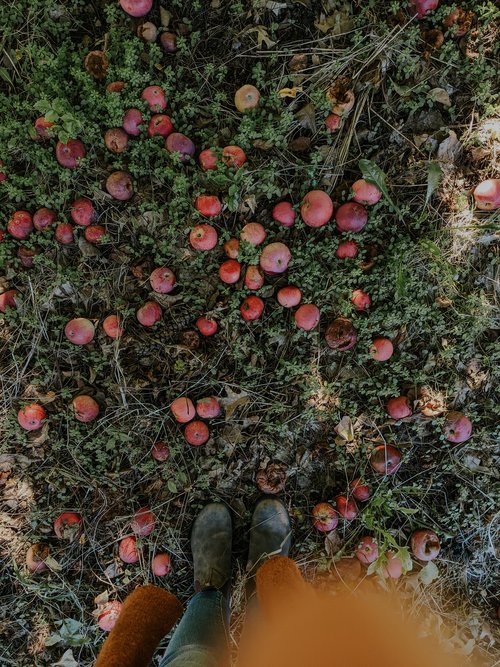
Hot Mulled Apple Cider Recipe
Ingredients
- 1 gallon apple cider
- 2 Apples, sliced
- 1 Orange, sliced
- ½ Cup cranberries (fresh or frozen is fine)
- ½ cup maple syrup
- 2 tbsp lemon juice
- 4 cinnamon sticks
- 8 whole cloves
- 8 whole cardamom pods
- Large dutch oven or soup pot
- Wooden spoon
- Knife
- Cutting board
Instructions
- Measure out your spices into the bottom of the Dutch oven and toast them on low for one minute to bring out the flavors, being careful not to burn.
- Slice the orange and apples.
- Add the fruit and apple cider to the Dutch oven and bring to a simmer. You don’t want to turn the heat too high as it may cause the cider to separate (this won’t affect the taste just the appearance)
- Cider can be mulled at a low temperature for up to 4 hours or at a simmer for about 1 hour, depending on your preference.
- Ladle into festive glasses or mugs and enjoy with fruit and cinnamon sticks to garnish!
Nutrition Facts
Calories
178.7Fat
1.16Sat. Fat
0.34Carbs
39.58Fiber
2.11Net carbs
37.45Sugar
32.13Protein
3.66Sodium
21.68Cholesterol
9.18Slow Living in the Garden with Chronic Illness
In August, the garden becomes a jungle dense with life, the most self-sufficient it will be as established plants require less and less of my daily attention.
I do not take for granted that the systems I labored to put in place all year long have finally paid off, the dividends materializing in the form of bell peppers, beans, squash, broccoli, chard and more. But I still like to think I am needed in this season, if only to fend off errant pests and the occasional drought. Feeling needed in the garden is one of the most fulfilling pieces of working with the land.
Winter
Last winter my Psoriatic Arthritis flared the worst it ever has, and I found myself wondering if there would be any bit of me that was able to enjoy summer. It hurts my heart to even think about the place I was in mentally. How stuck I was. When you don't have the choice to do the things you love, it can feel like your identity is slipping away.
On a particularly bad day, I thought of geese.
Being the lead goose in a formation is hard. Research has shown that the passage of the leading bird through the air provides an aerodynamic increase in the lift to the bird following behind. This is why geese fly in a V formation.
How do geese decide who will lead their journey? Is it the strongest bird? The one with the largest wings?
The truth is much more humbling.
Each goose is equally responsible for leading, at different times. They take turns. They share the burden.
I see similar patterns in my own life in this season. We cannot always lead our flock. Sometimes our flock needs to lend a wing, and increase our own lift in turn.
Struggling under the weight of extreme fatigue, pain, and inflammation, I had to accept help more than I’m comfortable with. I had to take on a role of rest and recuperation, and put aside responsibilities.
I learned to be comfortable in the physical and mental discomfort and believe that the people around me want to help me to shoulder that burden.
This vulnerability grounds me. It makes me strong.
Spring
With spring came new growth and new medication. I've struggled to write about my chronic illness since finding a treatment that helps, because not everyone gets to come out of that place I was in. I'm also waiting for the other shoe to drop, feeling like I am on borrowed time.
The weight of that knowledge is heavy on my mind any time I celebrate how far I've come or I realize I was able to do more than I could have before my medication change. It also feels like things were so bad, any improvement is seen from the outside as me being 100% "better" by comparison - which is just never going to happen. It's difficult for me to just appreciate the positive changes without that tinge of uncertainty. Autoimmune disease is like that. When so little is understood you are forced to reckon with an ever changing emotional and physical reality and accept the unknown. Otherwise you miss out on enjoying the good times.
It was a long winter, and spring has been full of hope and realized dreams. But we don't have to find the silver lining in everything all of the time. Sometimes there really isn’t one until you look back later and realize how much you’ve grown through what you’ve gone through.
I know in my heart that these struggles have always made me stronger and more empathetic. I hope sharing my struggles can help someone else feel less alone.
These really hard days don't last. Even when they feel like they will never end, there is always some type of pause and laughter and forgetting of what you’ve gone through, what you’re going through.
I watch what a seed must accomplish before it can become a harvestable, mature plant and wonder if I too am like the seed. Maybe, just maybe, I will form roots and strength where pain and loneliness once was.
This spring I feel tightly encased in my hardened shell, but ready to burst forth and see the sunshine again. But I worry - I know that my love of gardening will test my physical limits, and I need a plan to modify the garden to fit my limitations.
The work of preparing the garden this spring has been harder than ever before, but it wasn't because I planted more - I planted less. It was harder because of my arthritis.
Anyone with chronic illness will tell you that the energy we have is limited. Even medicated and feeling so much better than I did all winter it's still hard to do the things I used to do.
I cried in frustration multiple times. I almost gave up. I have had to let others help me do the things I was so looking forward to doing.
I can’t say, "I got it done anyway" because that's not how chronic illness works - I didn't finish all my tasks. I felt disappointed and so very angry with my body. Something I love to do has been changed in a way I don't know if I'll ever get back and it's okay if that's an adjustment and it's ok if I spend half my time enjoying it and the other half with tear stained dirt streaks running down my face.
Two things can be true. Life isn't a straight line path we get to walk down, even on a moment to moment basis there will be ups and downs.
Accessible Garden Planning
I have the luxury of space, of sprawling land to wander and call home. I have the luxury of time, to spend planning what I'll grow where, to dig in the earth. I have the luxury of knowledge, gathered through my failures.
I can grow my food and watch it from the comfort of this space, this sanctuary I am creating on our land.
These things are not afforded to everyone. Accessible sustainability should be the norm, but it is not.
This season, I took a few steps in order to make it possible for me to garden WITH my chronic illness, not despite it. The first was to accept that I wouldn’t grow as much as I have previously. The second was to set up elevated garden beds.
Since gardening involves a fair amount of kneeling, I knew I had to find a way around that, and elevated beds seemed to be the way to go. I began to research elevated beds, looking for a solution that would work for me.
It turned out that solution was staring me right in the face.
As we began a deep spring clean of our basement my eyes landed on two raised wooden retail tables from a store closing sale that have been sitting in storage for years. We didn’t have to buy anything, we didn’t even have to BUILD anything.
I dragged them outside and got them into position, then I wiped them down and drilled drainage holes into the plywood “floor” of the bed. A layer of weed barrier, then small sticks and top soil blended with last season’s compost, and I had two elevated beds. Our food waste would feed our plants, and our plants would feed us.
I also installed olla watering pots in our garden beds.
Ollas keep your plants watered through a process called soil moisture tension. When the soil around the olla is dry, the water is pulled out through the pot’s “pores”, or microscopic holes in the unglazed clay, and makes its way to your thirsty plants. If the soil is already moist, the water stays in the pot.
With the ollas installed, I would only need to water the gardens every 3-5 days, and instead of standing there holding a hose for what felt like hours I could simply fill the olla pot with water and call it done.
The last thing I did was to get ahead of the weeding. We still had one main in-ground garden bed for larger plants like our corn and squash, and I knew that bending and kneeling to battle the weeds would not be an option any more. I combated this by spreading a very thick layer of straw over the entire bed before I planted anything.
Summer
My accessible garden plan is working. We’ve pulled a spare table out to give me a spot to sit and rest by the sunflowers. It has become a sanctuary for me. I am frustrated at times with how little I have been able to grow in comparison to years past, but I appreciate that I do not have to spent hours tending the garden every week if I’m not able to. The garden will be just fine without me for a bit. I let go and let nature take over.
In August, the garden becomes a jungle dense with life, the most self-sufficient it will be as established plants require less and less of my daily attention.
I do not take for granted that the systems I labored to put in place all year long have finally paid off, the dividends materializing in the form of bell peppers, beans, squash, broccoli, chard and more. But I still like to think I am needed in this season, if only to fend off errant pests and the occasional drought. Feeling needed in the garden is one of the most fulfilling pieces of working with the land.
I’m still processing some disappointment as I've watched other gardeners with their huge lush garden beds, and it's felt like another form of grieving my life before chronic illness. I was able to do that once, and now I can't.
Yes, I am making the most of my circumstance, and yes - my medications have allowed me to return to the activities that make me "me" to some degree. But unless you have chronic illness, you can't understand how hard it is to know things will never be exactly the same as they were when you were healthy.
I am proud of what I have accomplished - I may not have grown the usual quantity of plants, but I have learned to appreciate what I have, accept and support my body, and dedicate time to things that make me happy.
I could go on forever about how chronic illness forces you to put things in perspective in a way that gives as much as it takes, but I'll leave it at that. I went from hating getting up early to go to work at my office job in a call center to making excuses to get up early to tend to the garden, grow our own food and flowers, create art and just enjoy nature. At it’s root, no matter how much or how little I grow - this is what matters.
Your dream life is just one decision away from becoming reality - what small steps can you take today to bring yourself closer to your dreams?





